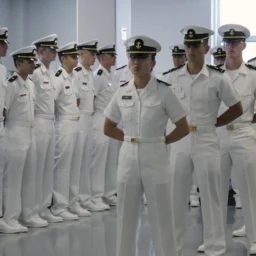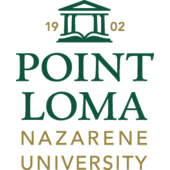
Navy ROTC: Everything You Need to Know
The Navy Reserve Officers Training Program, also known as NROTC, is a leadership development program designed to commission high-quality leaders for the U.S. Navy, Marine Corps, and the Navy Nurse Corps.What Is the Navy ROTC program?
According to the Navy official site, Navy ROTC is a scholarship and commissioning program offered to qualifying applicants at 4-year universities. Graduates of Navy ROTC "enter the Navy in a leadership position as a Commissioned Officer," a position described as someone who has completed a four-year degree program and Navy Officer Training. "Officers in the Navy have responsibilities that include anything from low-level management to the highest levels of command."Navy ROTC requires initial service commitment, which Navy.mil says is between 3 and 5 years, "though positions involving longer-term training may require longer service obligations."
A Brief History of Navy ROTC
The Navy ROTC Program was established in 1926 to allow citizens to pursue careers in naval service. At its inception, there were six Navy ROTC units at the University of California at Berkeley, Georgia Institute of Technology, Northwestern University, University of Washington, and Harvard and Yale Universities.The first cohort graduated 126 midshipmen in June of 1930.
In 1932, the Marine Corps became part of the Navy ROTC program, which offered qualified Navy ROTC graduates the opportunity to commission into the U.S. Marine Corps. The Marine Corps is a subdivision of the Navy, so its ROTC program is bundled with the NROTC program.
Participants who qualify for the NROTC program can enroll in the Marine Corps ROTC (MCROTC) and have pathways to the Navy Nurse Corps.
The Navy ROTC Program is available at over 160 colleges and universities nationwide.
What are the requirements of the Navy ROTC program?
To meet the basic eligibility requirements of the Navy ROTC Program, prospective participants must be:- A citizen of the United States or in the process of being a citizen,
- At least 17 years of age and no older than 23 in their first year of college
- Have no criminal record.
It is important to note that the NROTC Program is smaller than the Army and Air Force ROTC programs, which makes it more competitive.
Being Accepted Into ROTC
Upon acceptance into the program, participants must complete all requirements of their Bachelor’s degree program while maintaining academic success, complete the curriculum prescribed by the Navy, participate in weekly drill sessions, and partake in four—to six-week training periods each summer.Upon completion of the NROTC or MCROTC program, a minimum of two years of active enlisted service is required. If a participant chooses to disenroll, they are responsible for paying back all of the tuition money they were awarded.
What are the benefits of entering into the Navy ROTC program?
Military Career Opportunities
Participating in the NROTC or MCROTC program creates an opportunity to follow a military career path as Navy ROTC graduates are commissioned as Ensigns in the Navy and MCROTC graduates are commissioned as Second Lieutenants in the Marine Corps.The program's graduates have pursued career paths as naval Aviators, naval Nurses, Special Operations Officers, Submarine Officers, Surface Warfare Officers, and more.
Skill Development
Skill development, particularly leadership skills, is a beneficial aspect of participating in the Navy or Marine ROTC program. The program is designed to build theoretical, leadership, and practical skills through classroom instruction, fieldwork, and naval science laboratories.Other skills participants learn through their courses and other programmatic requirements include military-related skills, navigation, team building, communication, knowledge of naval science, discipline, accountability, and problem-solving.
Scholarships/Financial
A significant benefit of participating in the Navy or Marine ROTC program is the opportunity to receive a scholarship that can alleviate the costly financial burden of higher education.The scholarships are based on merit and meet the physical fitness requirements of the NROTC and MCROTC programs.
How do I join the Navy ROTC program?
The first step in getting involved with the Navy ROTC program is to confirm that the school you are applying to or currently attending offers the program.Prospective midshipmen or Marines should connect with the NROTC program at the school they will be applying to or are currently attending to obtain information about how that specific institution handles the Navy ROTC application.
Colleges and universities that offer NROTC programs typically have a specific page and contact information on their website to answer questions and provide support.
Additionally, prospective midshipmen or marines can connect with a recruiter who can answer any questions, determine eligibility, and help guide them through the application process if they don’t have a school in mind.
Filters
Degree Level
Search and select multiple degree level.
Search and select multiple degree level.
Associate's degree
Bachelor's degree
Certificates
Doctorate degree
Master's degree
Degree Program or Area of Study
Search and select multiple area of focus.
Search and select multiple area of focus.
Accounting & Finance
Advertising
Aerospace, Aviation, Aeronautical, and Astronautical Engineering
Agriculture Business & Production
Agriculture Science
Airframe & Powerplant
American/United States Studies/Civilization
Animal & Livestock Sciences
Anthropology
Arabic Language & Literature Studies
Architecture Studies
Art History, Criticism and Conservation
Art Teacher
Art, Animation, Design General
Astronomy
Auto/ Transportation Studies
Automotive Mechanics Technician
Aviation
Bio/ Chemical Engineering
Biochemistry
Biology
Biology Teacher
Biomedical & Medical Engineering
Biotechnology
Business Administration
Business Analytics
Business Operations Support and Assistant Services
Carpentry / Carpenters
Chemistry
Chiropractic / Chiropractor
Civil Engineering
Communications
Computer Engineering
Computer Science
Computer Technician
Conflict & Dispute Resolution
Construction Engineering
Construction/ Labor
Cosmetology, Grooming, Haircare & Styling
Counter Terrorism
Creative Writing
Criminal Justice Policy
Criminal Justice, General
Culinary Arts & Food Services
Culinary Management
Culinary Studies
Cultural & Language Studies
Curriculum and Instruction
Cyber Security & Operations
Dance
Data Analytics
Data Analytics & Data Science
Data Science
Dental Assistant
Dentistry
Early Childhood Education
Earth & Environmental Sciences
Eastern Medicine
Economics
Education Administration
Education/ Teacher Development
Electrical Engineering
Electrician Technology
Electrocardiograph Technology/Technician
Elementary Education
Emergency Medical Technician (EMT Paramedic)
Emergency Services
Energy Systems
Energy Systems Engineering
Engineering General
Engineering Technologies/Technicians
Engineering Technology
English
English as a Second Language/ESL Language Instructor
English/Language Arts Education
Entrepreneurship/Entrepreneurial Studies
Executive Assistant - Certificate
Fashion
Film & Photography
Finance Crime
Fire Science & Fire Services
Funeral Service & Mortuary Science
General Disciplines Teacher Education
General, Multi-/Interdisciplinary Studies
Genetics
Geography
Geology/Earth Science
Graphic Design
Health Data Analysis
Health Science
Healthcare Administration
Heating, Air Conditioning, Ventilation and Refrigeration Maintenance Technology/Technician (HAC, HACR, HVAC, HVACR)
Hemodialysis Technician
History
Homeland Security
Hospitality/ Tourism
Human Behavior Studies
Human Resources
Human Services, General
Humanities/Humanistic Studies
HVACR
Industrial Engineering
Information Sciences
Information Technology
Integrative and Functional Medicine
Interior Design
International Business/Trade
International Relations / Global Studies
IT Management
IT Security
IT Support
Journalism
Junior High/Intermediate/Middle School Education
Lab Sciences
Language Teacher Education
Leadership & Management
Legal Assistant/Paralegal
Legal/ Law Studies
Library Science & Administration
Logistics & Supply Chain Management
Management in Energy
Management Information Systems
Marketing & Retail
Massage Therapy
Mathematics
Mechanical Engineering
Medical Administrative Assistant
Medical Assistant
Medical Coding and Billing
Medical Residency
Medical Transcription Editing
Music & Singing
Music Education
Naturopathic
Neuroscience
Nuclear Engineering
Nursing
Nutrition
Occupational Therapy / Sciences
Optometry
Personal Trainer
Pharmacy
Pharmacy Technician
Philosophy
Physical Education Teaching / Coaching
Physical Sciences (Other)
Physical Therapy/ Exercise Science
Physican Assistant
Physics
Physiology
Police/Corrections/ Criminal Studies
Political Science
Pre-healthcare Studies
Procurement & Acquisition
Project Management
Psychology Studies
Public Administration
Public Health
Public Relations
Public Sector Management
Radiology and Medical Imaging Sciences
Reading Teacher
Real Estate
Religious Studies
ROTC
School Counseling and Guidance
Science Teacher
Secondary Education
Security & Military Science
Skin/ Make-Up/ Nail Specialist
Social Sciences
Social Studies Teacher
Social Work
Sociology
Spanish
Special Education
Sports and Fitness Administration
Statistics & Business Analytics
Surgery Residency/Fellowship Programs
Theatre
Trade/ Technicians
Vehicle/ Engine Technology/ Repair
Veterinary Assistant
Veterinary Science & Animal Care
Welding
Womens Studies
Where do you plan to study?
Alabama
Alaska
Arizona
Arkansas
California
Colorado
Connecticut
Delaware
Florida
Georgia
Hawaii
Idaho
Illinois
Indiana
Iowa
Kansas
Kentucky
Louisiana
Maine
Maryland
Massachusetts
Michigan
Minnesota
Mississippi
Missouri
Montana
Nebraska
Nevada
New Hampshire
New Jersey
New Mexico
New York
North Carolina
North Dakota
Ohio
Oklahoma
Online
Oregon
Pennsylvania
Puerto Rico
Rhode Island
South Carolina
South Dakota
Tennessee
Texas
Utah
Vermont
Virginia
Washington
Washington, DC
West Virginia
Wisconsin
Wyoming
Type of School
Years Offered
Campus Setting
Size of School
Gender-Specific
Religious Affiliation
Religious Affiliation
Ethnic Affiliation
Financial SupportAcademic SupportPrograms
Participating Schools
Over 160 colleges and universities across the country participate in Navy and Marine ROTC programs. Many well-known schools participate in the program, including Penn State University, UCLA, George Washington University, University of Notre Dame, MIT, Cornell University, and more.Students interested in the Navy ROTC can discover more military-friendly colleges on CollegeRecon that participate in the program by using the CollegeRecon School Finder.
Navy & Marine ROTC Curriculum
The Navy and Marine ROTC curriculum is designed to be rigorous in preparation for participants to become Commissioned Officers in the U.S. Navy and Marines.The NROTC and MCROTC curriculum is divided into four major areas: naval science, leadership, navigation, and warfare principles.
In the first three semesters of the program, the Navy and Marine participants take the same naval science courses and then split off in the Junior and Senior year of the program to specialize in topics related to their respective branches.
For example, in the third and fourth years of the program, the Navy midshipmen will focus on naval ship systems, naval operations, and seamanship. In contrast, the Marine participants focus on more specific classes about warfare and warfare maneuvers. Both groups will take intensive leadership courses and one naval science laboratory per semester.
Marine Corps ROTC participants will also attend Officer Candidates School (OCS) as a leadership and practical skill intensive.
Scholarship Opportunities
The NROTC and MCROTC programs offer scholarships to program participants. Navy, Marine, and Nurse Corp scholarships are awarded based on merit, with a minimum GPA requirement of 2.5 and a competitive score on the physical fitness test being the basic eligibility requirements.The Four Year National Scholarship is the most competitive. It covers full tuition, all fees, a textbook stipend, and room and board.
The Two and Three-Year National Scholarship is also competitive and is awarded by the national scholarship selection board each summer. Participants who are entering into their sophomore or junior years of college can apply for this through the NROTC unit located at their college.
Another option is the Minority Serving Institution (MSI) Scholarship, which is available to students attending Historically Black Colleges and Universities (HBCU), High Hispanic Enrollment schools (HHE), and other Minority Serving Institutions. This scholarship covers full tuition and fees, books stipends, and subsistence stipends each month.
For the MCROTC, prospective Marines can apply for the Frederick C. Branch Leadership Scholarship or the General Pedro Del Valle Leadership Scholarship. Discover more Navy ROTC scholarship opportunities on CollegeRecon.



















